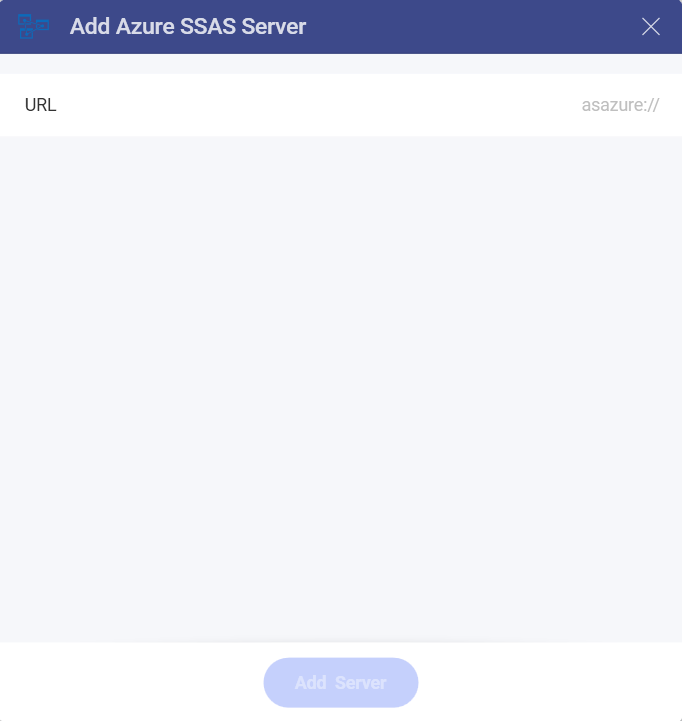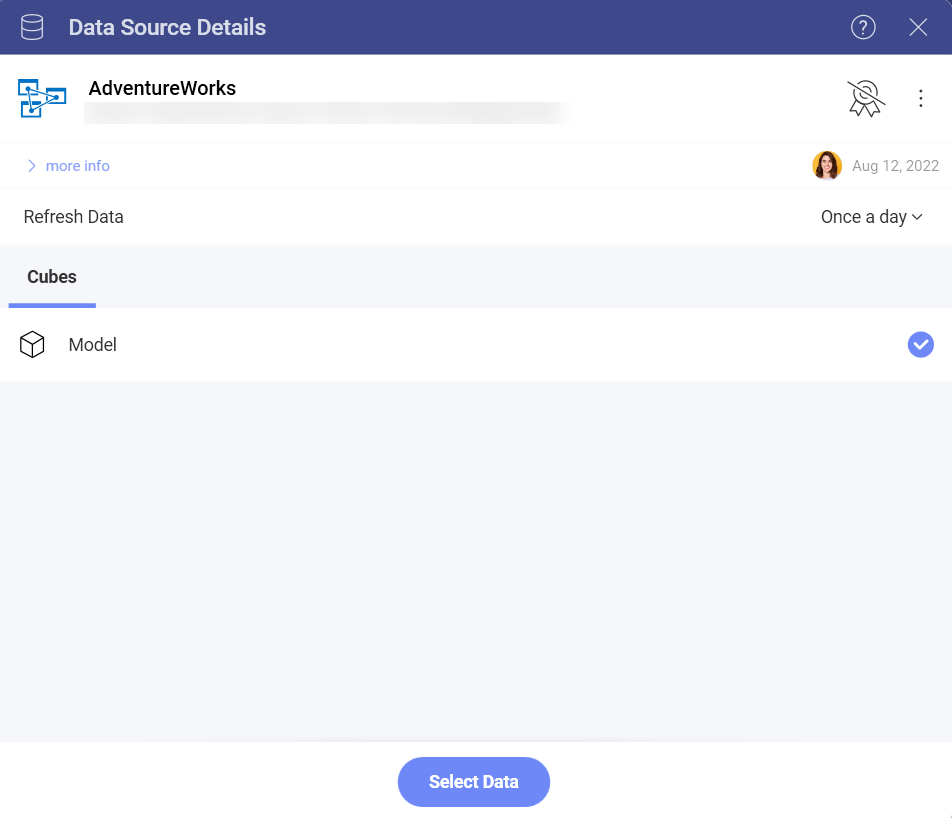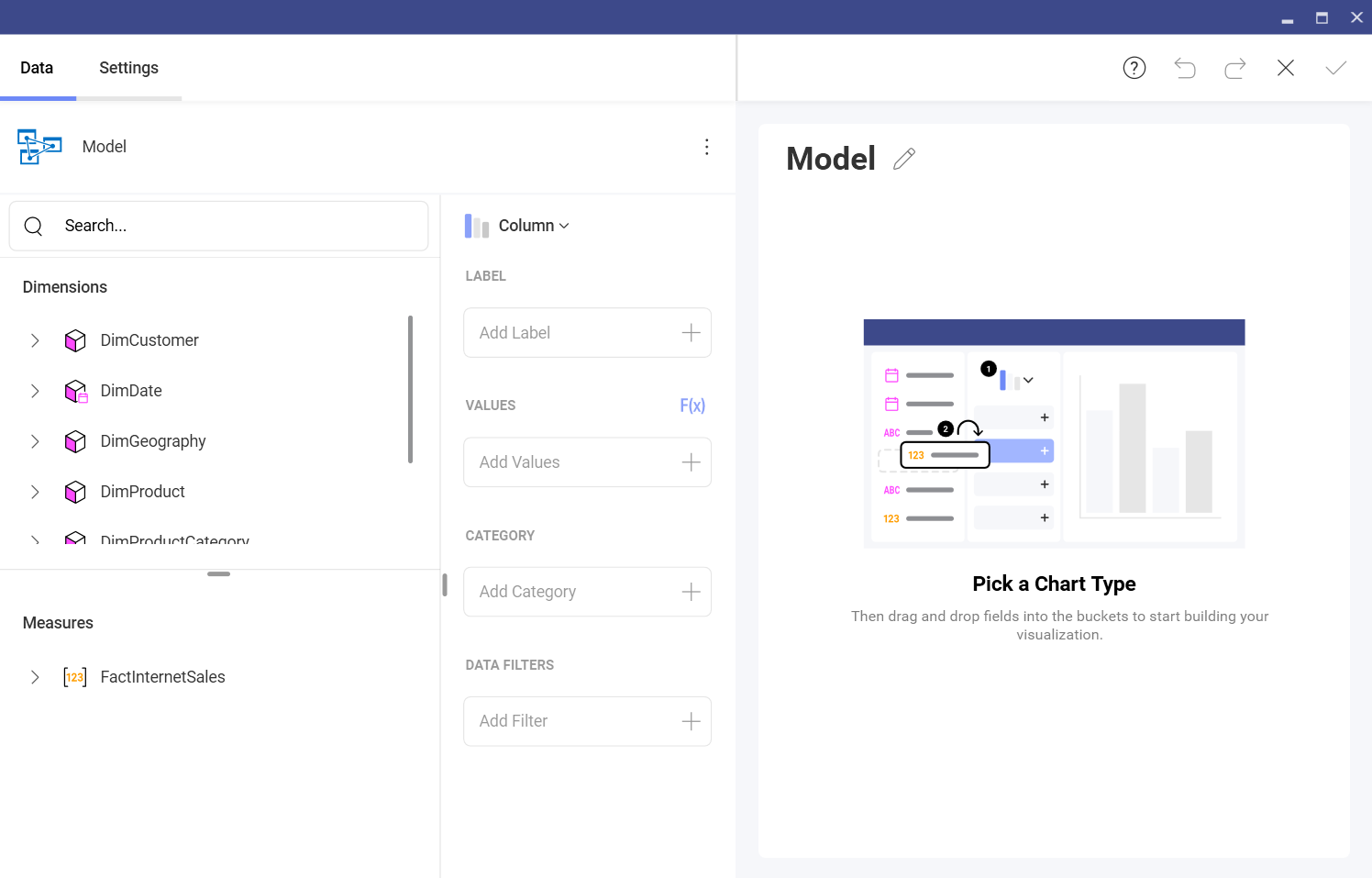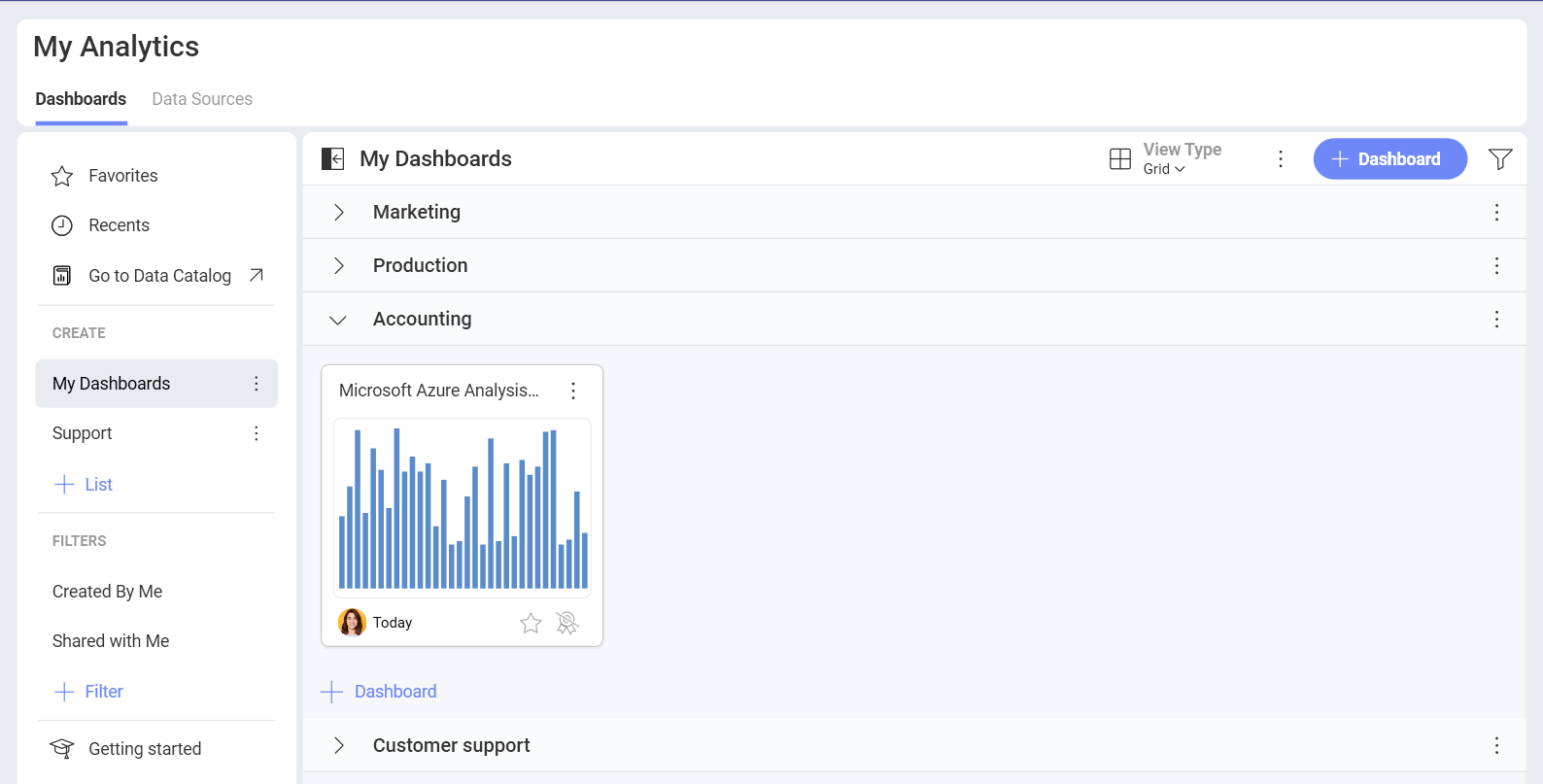Microsoft Azure Analysis Services
Azure Analysis Services is a fully managed platform as a service (PaaS) that provides enterprise-grade data models in the cloud. Now, you can use the Azure Analysis data models in Analytics to create dashboards and perform data analysis.
Configuring an Azure Analysis Services data source
Unlike other databases used in Analytics (Microsoft Analysis Services, MySQL, Oracle, etc.), MS Azure Analysis Services can be used in Analytics Web.
Note
Limitations in Web when first connecting to your Azure Analysis Services. Due to security restrictions, the process of initial configuration and authentication of your Azure Analysis Services cannot be done in Analytics Web. You can initially connect to this data source in the iOS, Android, or Desktop app. After the initial connection, you can create or edit dashboards using data from this Azure Analysis Services with no further limitations.
To configure your Azure Analysis Services data source, you will need to perform the steps below.
Provide the credentials to your Microsoft account (the account associated with the Azure Analysis server).
Provide a URL to your server in the Add Azure SSAS Server dialog:

The requested URL is the full name of the server, which contains the database with the data models you want to connect. You can copy the server name from the Azure Portal. To do this, go to:
Azure portal ⇒ selected server ⇒ Overview ⇒ Server name
Go back to Analytics and paste the server name in URL field. Click/tap on the Add Server button, which is now enabled.
Once you have added the server, Analytics will load and show the databases on the server. Here you will find a list of all the available semantic models in your database. Choose a model and click/tap on Select Data to continue to the Visualization Editor.

Working in the Visualization Editor
Here you will see the data from your model presented in two categories:
Dimensions contain qualitative data ("Country", "Name", "Product", etc.).
Measures consist of numeric data.

By default, the Column visualization will be selected. You can click/tap on it in order to choose another chart type from the drop-down menu.
When you are ready with your visualization, you can save it as a dashboard by clicking/tapping on the checkmark in the top right corner. In this case we saved the dashboard in My Analytics ⇒ My Dashboards ⇒ Accounting.

